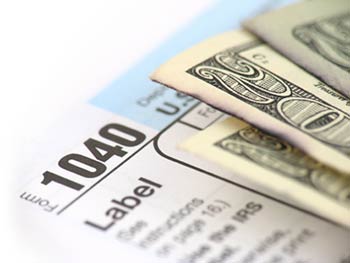Tax season can be a stressful time for many, but one question that’s always on the minds of taxpayers is, “When can I expect my refund?” Whether you’re eagerly anticipating a tax refund or you’re simply trying to plan your finances, knowing when that much-awaited refund will arrive is crucial. In this post, we’ll provide you with insights and tips to help you estimate the approximate date when you can expect your tax refund to be deposited or mailed.

Filing Your Tax Return
The timing of your tax refund largely depends on when you file your tax return. The IRS typically starts accepting tax returns in late January each year. If you’re eager to get your refund quickly, it’s a good idea to file as early as possible. Electronic filing (e-filing) is the fastest way to submit your return and receive your refund.
Checking Your E-Filing Status
If you choose to e-file your tax return, you can check the status of your refund using the IRS’s “Where’s My Refund?” tool. This online tool is available on the IRS website and provides real-time updates on the progress of your refund. You’ll need your Social Security number, filing status, and the exact refund amount to use this tool.
Paper Tax Returns Take Longer To Process
If you prefer to file a paper return, keep in mind that it takes longer for the IRS to process paper returns compared to electronic filings. The IRS may require additional time to manually enter your information into their system, which can delay your refund. Typically, paper returns can take up to six weeks or more to process.
E-File and Direct Deposit
The fastest way to receive your refund is by e-filing your return and opting for direct deposit. Direct deposit allows the IRS to transfer your refund directly into your bank account. This method is not only quick but also reduces the risk of checks being lost in the mail.
Tax Season Traffic
It’s important to remember that during the peak of tax season, which is typically between late January and April, the IRS experiences a high volume of tax returns. This influx of filings can slow down the processing of refunds. Be prepared for some delays if you file during this period.
Estimated Tax Refund Timeline
While the exact timing of your refund can vary based on factors such as the complexity of your return and any errors that need correction, you can generally expect the following estimated refund timelines:
- E-filed with direct deposit: Within 21 days from the date of acceptance.
- E-filed with a paper check: Within six weeks from the date of acceptance.
- Mailed paper return with direct deposit: Up to six weeks.
- Mailed paper return with a paper check: Up to eight weeks.
Keep Your Contact Information Updated
Ensure that your contact information, including your mailing address and bank account details, is accurate and up-to-date. Any discrepancies or errors in this information can result in delays in receiving your refund.
While there’s no surefire way to predict the exact date of your tax refund, understanding the factors that influence the timing can help you plan your finances more effectively. By e-filing your return, opting for direct deposit, and keeping your information current, you can maximize the chances of receiving your refund as quickly as possible. Remember, patience is key during tax season, and you can always track the progress of your refund using the IRS’s online tools. Here’s to a stress-free tax season and the timely arrival of your refund!

